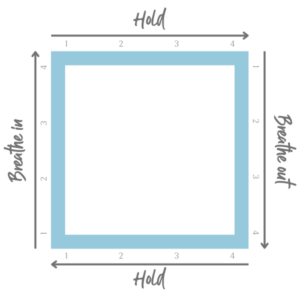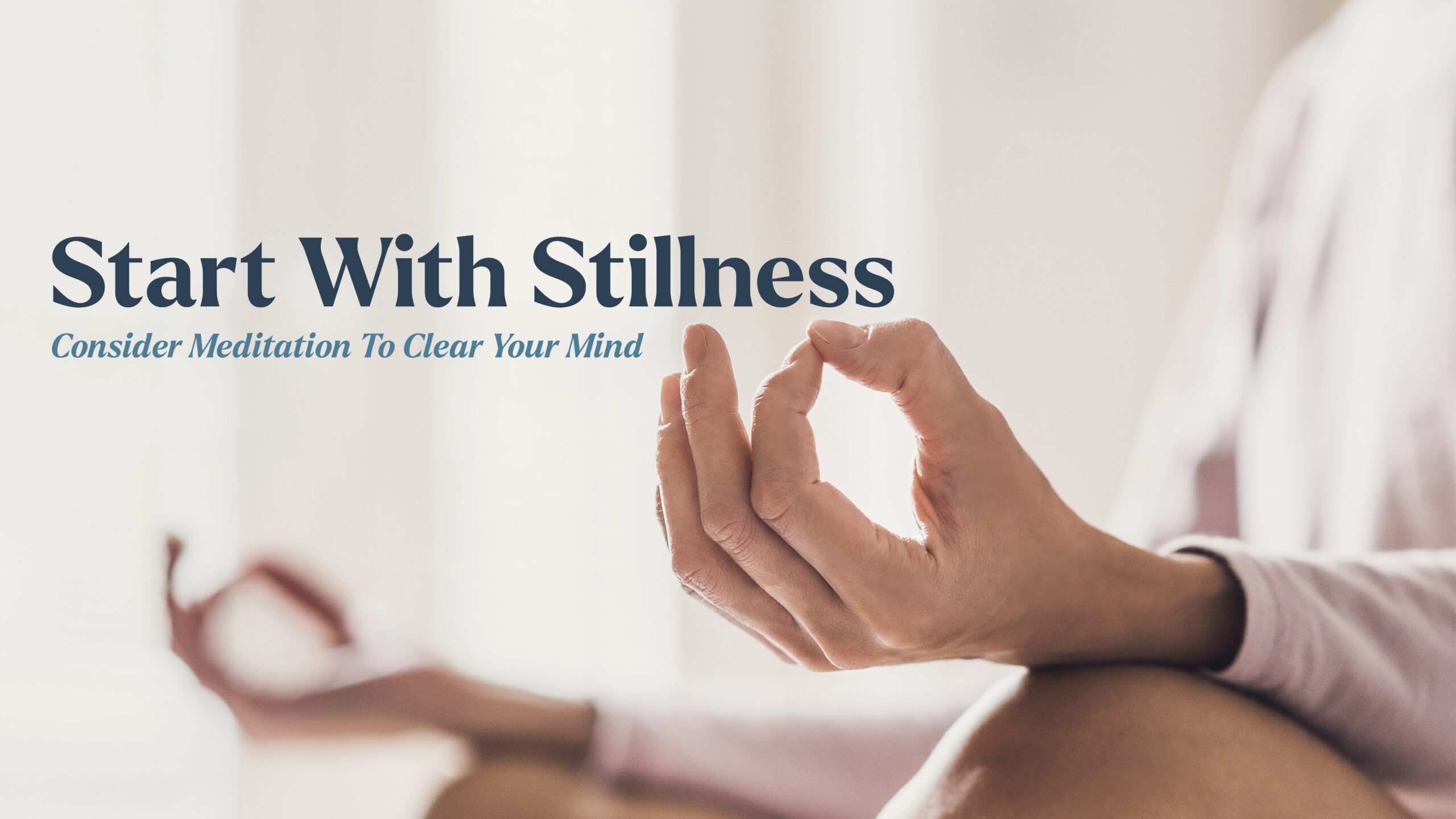Give yourself a gift and try it once, says Marisa Macho Gagner, Licensed Associate Marriage and Family Therapist (LAMFT), Master Practitioner of Neuro-Linguistic Programming, and Reiki Master with Alluma.
When it came to meditation, I was skeptical about the subject matter itself. It wasn’t that I didn’t buy the notion that meditation can do wonders for one’s mind and body. It’s just that I wasn’t convinced that meditation could do wonders for my own mind and body. But after spending a little more than 90 minutes learning and going through several simple guided meditations with Macho Gagner – I am no longer a meditation skeptic.
As Macho Gagner paused between meditations to discuss what my wife and I experienced – or didn’t experience – I found myself more than once blinking profusely and trying to focus squarely on Macho Gagner as she sought from us our reactions and insights on our states of mind. I just felt relaxed…and good.
And all I did to achieve this state of mindful peace was follow Macho Gagner’s confident, soothing lead and breathe. Deeply. And hold it in a few brief seconds, and then let it out, slowly but surely. Repeat. And repeat again, and again. Closing our eyes wasn’t required, but my wife and I closed them. We tried to picture what Macho Gagner asked us to try and imagine and let our minds and bodies react. All the while, we breathed, in and out.
“What you did, square breathing, or box breathing, it’s very basic. You simply inhale in for 4 counts, hold for 4, exhale for 4, and hold for 4. It’s breathing with intention,” Macho Gagner explains. “Anyone can try this and experience this because if you’re alive and breathing, you’re already on your way to meditating. The heart and belly breath meditation connects our bodies to our hearts. You place one hand on your heart and one hand on your belly to do this meditation. Feel the expansion and release. The belly is where our emotions lie, and the heart is the drumbeat of our life-force energy.”
Something that simple can relieve stress and anxiety, decrease depressed feelings, and bring a sense of calm and relaxation.
And if you’re open to it, maybe even more. “It can bring you closer to Spirit, whatever that may be for you,” Macho Gagner adds. “For some people, maybe compassion is their spirituality; that’s their religion, just being kind to another person. So, if you just focus and set an intention on deep breathing, you will quiet your mind and hear the whisper inside. Your unconscious mind, which controls, without us even consciously thinking about it, our heart rate and our breathing.”
Macho Gagner likes to think of an iceberg when explaining the conscious and unconscious mind. The conscious mind is our present awareness. It’s the part of the mind that we’re in when we’re talking and listening to others, learning, and thinking. It’s the part of the iceberg above the ocean’s surface, the part we can see. The unconscious mind is the largest and most powerful part of our mind. It’s the part of the iceberg below the surface, the part we can’t see. Our unconscious mind runs and preserves the body. It controls our breathing, our heart rate, and our sleep cycles. We may not know it, but our unconscious mind is brilliant and a potential treasure trove of resources.
“Our unconscious mind controls certain things without us having to consciously think about it. It’s where our dreams, unique talents and gifts, skill sets, resources, and strengths lie. It’s where solutions to problems are stored,” Macho Gagner explains. “When we’re in meditation, and our mind is quiet, we can set an intention to identify a solution to a problem. We can meditate and focus on our breathing. Then, while we sleep, our unconscious mind continues to work through that problem, and we may awaken with a solution.”
Some of the most successful athletes meditate, Macho Gagner notes. “During meditation, athletes like Tom Brady may see themselves doing something awesome, playing the greatest game of their lives. They picture the scene, see the crowd, hear the cheering, and see themselves passing for that winning touchdown,” she explains. “They run that play through their mind in meditation, and when they do that, the mind actually believes that it’s really happening. So, when they’re in the game, the unconscious mind feels like it’s already been there and knows exactly what to do.”
Before every shot, PGA golfer Jason Day meditates. Viewers can see him standing a few feet behind his ball with his eyes closed for several seconds before he opens them and approaches his ball. Perhaps “seeing the golf ball soar down the fairway or toward the green, where he already saw himself making that swing and hitting that beautiful shot.”
What it is, and isn’t
There are myths versus realities with meditation, or maybe some stereotypes to dispel. Many who have never meditated might have images of the classic “Buddha-like” pose in their minds. And assume that they have to sit cross-legged on the floor with their arms extended outward and their thumb and index fingers touching on both hands. You can do that if you wish, Macho Gagner says, but you certainly don’t have to if you are uncomfortable with this body position.
“There are thousands of ways to meditate. You can be dancing, walking, sitting down, or lying down. You can be guided or self-guided,” she notes. “Whatever you’re most comfortable with, you can do.”
But meditation is obviously about more than just trying to relax for a few moments and breathe slowly and deeply. There is science involved. There are biological forces in play, Macho Gagner stresses.
“When we breathe deeper, we lower our blood pressure, our cortisol levels drop, and our heart rate slows. Those are very positive things,” she explains. “Scientific research shows meditation can treat ADHD, anxiety, and depression. The results are still preliminary, and meditation as a sole treatment is not recommended. But, when utilized jointly or in conjunction with other exercises and mental health therapies, you can change your mindset and experience calm, relaxed, and peaceful feelings.”
Relaxation is rooted in the parasympathetic nervous system, she continues. “The unconscious mind activates the parasympathetic nervous system, which leads to calm, relaxed feelings,” Macho Gagner explains. “We want to be in that calm state of mind when socializing with people, giving a presentation, or learning in a classroom setting. You want to achieve that calmness, and meditation is a doorway to doing that.”
The unconscious mind also activates the sympathetic nervous system, triggering our fight, flight, or freeze response. “But in meditation,” she notes, “you’re triggering the calm.”
Meditation can support a calm, focused classroom environment and increase empathy and emotional regulation in the parent-child relationship. Decreased cortisol levels resulting from meditation can help a quarreling couple reconcile in a positive fashion quicker than they would have otherwise. A parent dealing with a preschooler throwing a tantrum can steal a moment to practice deep, square breathing and regulate themselves. “And at that moment, that’s what the child needs. A calm parent,” Macho Gagner notes. “The child’s brain seeks calming and will eventually unconsciously match a parent’s calm state of mind. Kids are so in-tune with their parents’ and teachers’ body language, tone of voice, and facial movements.”
Meditation can potentially unlock memories, positive or negative, stored in our unconscious mind.
If those memories are particularly painful, Macho Gagner explains, the unconscious mind may suppress them to ensure the very survival of the person. “Because that’s the unconscious mind’s job, survival…and growth,” she adds. “If a person has been through something traumatic, sitting quietly in meditation might be extremely scary, with the possibility of experiencing flashbacks, flooding, or experiences of that nature.” She stresses that in scenarios similar to this, she would especially encourage the support and/or participation of a licensed mental health therapist, one who is trained in grounding techniques and can provide a safe environment.
“We can lead guided meditations for trauma survivors,” she says. One “mindfulness meditation” involves the five senses. “The person focuses their attention on five things they can see, four things they can hear, three things they can touch, two things they can smell, and one thing they can taste. This is a very effective grounding technique to reconnect the person with feelings of safety in the here-and-now, present moment, not the memory of the bad thing that happened.” Macho Gagner adds.
“Meditation is growing, and the scientific research on its many physical, mental, emotional, and spiritual benefits clearly supports its growth,” she continues. People, famous athletes or otherwise, who find themselves hitting the pause button to focus on their emotional wellbeing, can find a meaningful outlet in meditation.
“Some people will actually cry, as they now have a quiet mind. Feelings can surface that the person hasn’t been in tune with until they’ve meditated,” Macho Gagner explains. “Crying is incredibly healing. If you feel tears coming, let them fall and refrain from trying to stop this process.”
If someone is looking at meditation as a potential path to better self-care, Macho Gagner says it’s important to start simple.
 Start with a focus on breathing and go from there, she says. “Take a mindful walk in nature, listen to birds singing, watch the bold colors of the sunrise or sunset, note that a pine tree smells differently than a birch tree, pay attention to the crackling sound of firewood,” she says. A person can simply lie down in their bed, set a timer for one minute, and focus on square breathing while saying a mantra to self, “I am feeling calm.” Or play a song and breathe deeply during that song.
Start with a focus on breathing and go from there, she says. “Take a mindful walk in nature, listen to birds singing, watch the bold colors of the sunrise or sunset, note that a pine tree smells differently than a birch tree, pay attention to the crackling sound of firewood,” she says. A person can simply lie down in their bed, set a timer for one minute, and focus on square breathing while saying a mantra to self, “I am feeling calm.” Or play a song and breathe deeply during that song.
Some people will say they can’t do it and claim that nothing productive can come from that single minute of intentional relaxation and reflection. But Macho Gagner says that one minute can produce positive results. “Close your eyes or keep them open. Focus on one thing that isn’t moving and listen to the quiet for just a moment,” she adds. “Something that brief and seemingly minimal is a positive experience.”
Macho Gagner ended one of her brief guided meditations with us by chiming a “singing bowl” she brought with her. It’s a beautiful sound that lingers before easing into the background. I wasn’t sure what to do when, with my eyes closed, I heard the chime. But I kept my eyes closed and opened them when the sound finally faded away. When I opened them, I felt, simply…better.
“You were regulated, if only for just a moment,” Macho Gagner tells me. “The sound of the singing bowl can actually change your brain waves.”
Like physical exercise, which releases the feel-good chemicals known as endorphins, when people try meditation and like the results, most will want to stick with it and even expand their meditative experiences. “More often than not, when you get into the practice, you start to feel the benefits and want more of it.” Macho Gagner explains.
“During meditation, I’ve had bright ideas, discovered solutions to problems, connected with Spirit and my inner resources, and felt peaceful yet invigorated. I’ve even got the giggles and cried tears of joy a time or two!”
Jim Schober, a colleague of Macho Gagner’s at Alluma, is among those who at one time gave meditation a try and now meditates frequently. He calls it “a bit of daily, needed self-care” that can be “brief, yet powerful.” And it’s basically impossible to, for lack of a better phrase, screw it up, he stresses, even if you’re giving it a try for the first time.
“Don’t worry about doing it wrong,” Schober adds. “All you want to do is get caught up in the moment versus negative thinking…clear the mind.”
 |
Marisa Macho Gagner, LAMFT Clinical Trainee |

